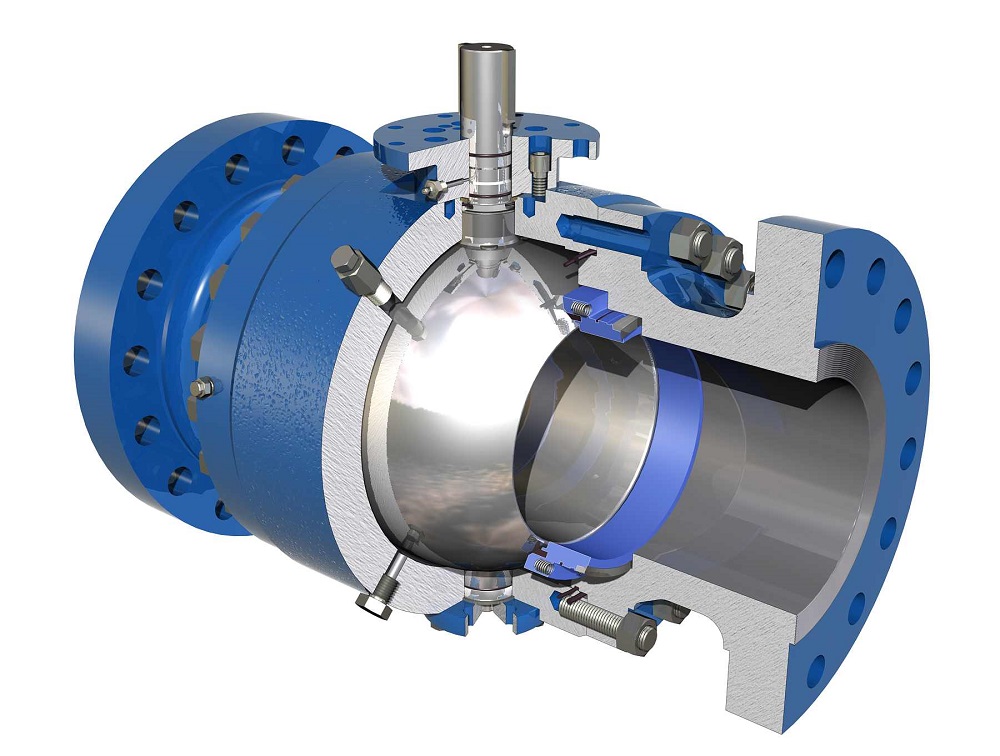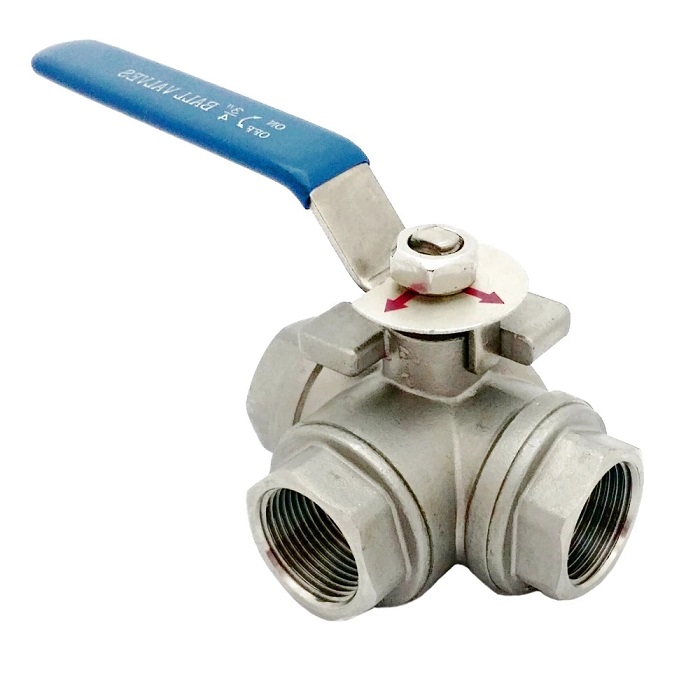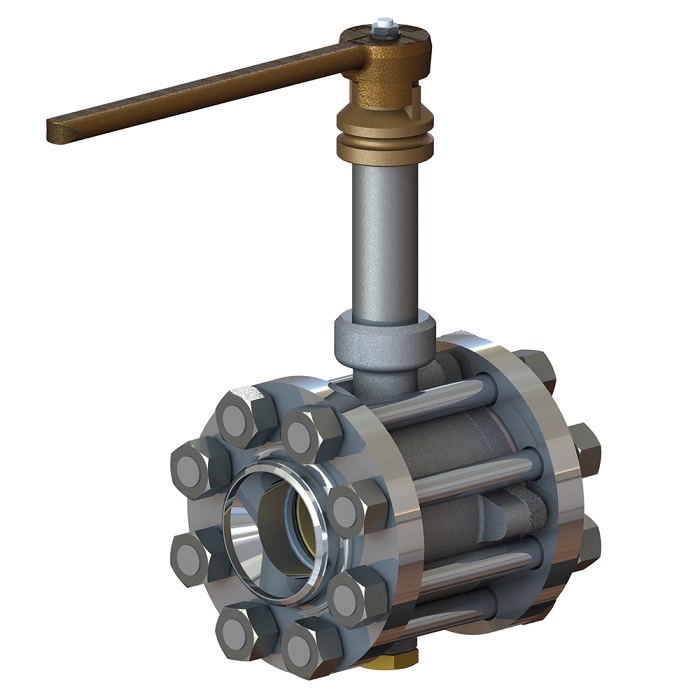In this article from Linquip, we’ll walk you through different ball valve types and provide a detailed description for each and every type and Valves traits.
First things first:
⇒ View a List of Ball Valves for Sale and Their Suppliers ⇐
What is a Ball Valve?
Ball valves are mechanical devices capable of controlling, guiding, directing, and modulating the flow of different substances such as gas, pressure, liquids, etc. There are different ball valve types with various designs for specific uses, but basic ball valve parts are the same among them. Different ball valves can be classified based on different features such as:
- Number of Ports: Ball valves can be easily categorized based on the number of ports. A standard ball valve type has 2 ports (1 inlet and 1 outlet). A 3-way port has also been designed with 1 inlet and 2 outlets, or 2 inlets and 1 outlet.
- Design: Different designs such as floating, and trunnion mounted.
- Seat Type: Teflon, Metal
- Body Assembly: unibody, two pieces, or three pieces.
- Ball Access: Side entry, or top entry
- Bore Size: Full bore, reduced bore, V-notch
Most Popular Ball Valve Types
There are six basic ball valve types:
- V-Port Ball Valve
- Full Port Ball Valve
- multi-port ball valve
- standard port ball valve
- reduced port ball valve
- True union
- Manually operated ball valve
4 General body styles have also been designed for ball valves based on their use and application including: split body, single body, top entry, and welded. But what are their traits and where should we use them?
Ball valve Types Specifications
Depending on the application, you should determine which ball valve type is the right one for you. You should consider different specifications such as pressure, size, temperature, number of ports, body materials, end connectors, and configurations.
-
Full Port Ball Valve
Full port or full bore ball valve is more expensive than other types. The oversized ball in the full port ball valve lowers the friction loss because the hole in this ball valve is the same size as the pipeline. Though the valve is larger, the flow is unrestricted in full port ball valve size.
Full bore ball valves are usually used for throttling applications in various systems with high flow coefficients and low pressure drops.
-
Standard Port Ball Valve
Compared to the full port, the standard port ball valve has a smaller port and ball. It’s less expensive but comes with a slightly restricted flow due to the pipe size. Though they are cheaper, they have higher pressure drops compared to other ball valve types. Standard port valves are great for systems with high flow coefficient, just like full port valves.
-
V-Port Ball Valve
The V in the v-port ball valve represents either the shape of the seat or the shape of the ball. V ball valve enables you to control the opening and the closing better. The flow characteristic in this type is close to linear. The high velocities of the fluids used with such ball valves forced the designers to come up with generally more robust construction for them since these types of fluids quickly damage a standard valve.
Watch Video about Ball valve types
-
Multi-Port Ball Valve
Multi-port ball valves have three or four ways with an L to T shaped hole in the middle. T valves can connect any pair of ports and the L valve can connect the center port to side ports. Inlet in a multi-port ball valve is usually orthogonal to the plane of the outlets. 4-way ball valves have 2 L-shaped ports in their ball known as X port.
-
Reduced-Port Ball Valve
Also known as RB, reduced-port ball valves or reduced bore the flow area is smaller than the pipe and the flow through the valve is one pipe size smaller than the valve’s pipe size. This type of ball valve creates a pressure drop in the pipeline.
Other popular ball valve types
-
True union (Trunnion)
True union ball valves have a pin in place which secures the ball in place and stops its movements. Two shafts at the opposite ends of the ball in Trunnion enable the supporting of a segmented ball by the valve and enable the system to cause less friction between different parts of the true union valve.
Systems with high velocity can use the benefits of true union ball valves since they can stand higher pressure than a standard ball valve. They can also be removed from the piping system if necessary.
See All Sprinkler Valve for Sale
-
Manually operated ball valve
Manually operated ball valves are easy to use and simplistic in design. The opening and the closing of the valve in this type happens by a quarter turn. The disadvantage is that this quick function might result in the danger of water hammer.
What are the materials ball valves are made of?
There are different materials used to create different ball valve types. Some of the more popular materials are as follows:
-
PVC
PVC, also known as Polyvinyl Chloride, is some sort of plastic which is used in the design of ball valves. One of their advantages is that they are flexible and smooth, providing easier movements for ball valve parts.
-
Bronze and Brass
Bronze and brass are ideal for ball valves that are used in the systems under low or medium pressure. Plus, these materials are water and corrosion resistant.
-
Stainless Steel
Different ball valve types use stainless steel as one of the important materials in their design since it contains many positive characteristics such as durability and corrosion resistance. Ball valves with stainless steel can be used in geochemical systems and general plant system.
-
CPVC
CPVC or Chlorinated PVC is similar to PVC but it can tolerate higher temperatures. This material is suitable for ball valves that are handling hot water.
-
Iron
Although iron is not as flexible as PVC, it has its own use when it comes to creating ball valves. Since iron can withstand a vast range of pressures and temperatures, it’s considered as a popular material for creating ball valves.
Remember that each of these ball valve types has their own advantages and disadvantages and it depends on where you want to use the ball valve and its application that makes one of them a better choice over the other.
That was all there’s to know about different ball valve types. Do you know any fun facts or specific information about them? Or do you have any experience with any of these ball valve types? Share your opinion with us in the comment section. And feel free to sign up on Linquip to receive help from the experts in this field.
Buy Equipment or Ask for a Service
By using Linquip RFQ Service, you can expect to receive quotations from various suppliers across multiple industries and regions.
Click Here to Request a Quotation From Suppliers and Service Providers
Read More on Linquip
- Upstream Flow Control and Valve Suppliers and Companies
- Valve Suppliers and Companies in United States
- Valve Suppliers and Companies in India
- Pneumatic Valve Suppliers and Companies
- Flanged Control Valve V150 for Sale
- Fisher EZ Control Valve EZ for Sale
- Control Valve ET for Sale
- Flow control valve types and functions
- globe valve vs ball valve; Which One Is the Best for You?
- Ball valve parts: An easy-to-understand Guide to know ball valves better
- Industrial Valves A Comprehensive Review on Parts, Types and its Usability
- Gate Valve vs Ball Valve
- Ball valve vs Plug valve
- Types of shut off valve: Your ultimate guide
- Types of plumbing valves: A complete guide
- Types of isolation valve: All you need to know!
- Types of Water Valves: The Ultimate Guide
- Ball Valve Manufacturers
- Pinch Valve Manufacturers
- Check Valve Manufacturers
- Needle Valve Manufacturers
- Butterfly Valve Manufacturers
- What is Joints and Elbows
- What is Knife gate valve
- What is Mixing valve
- What is Needle Valve






very nice